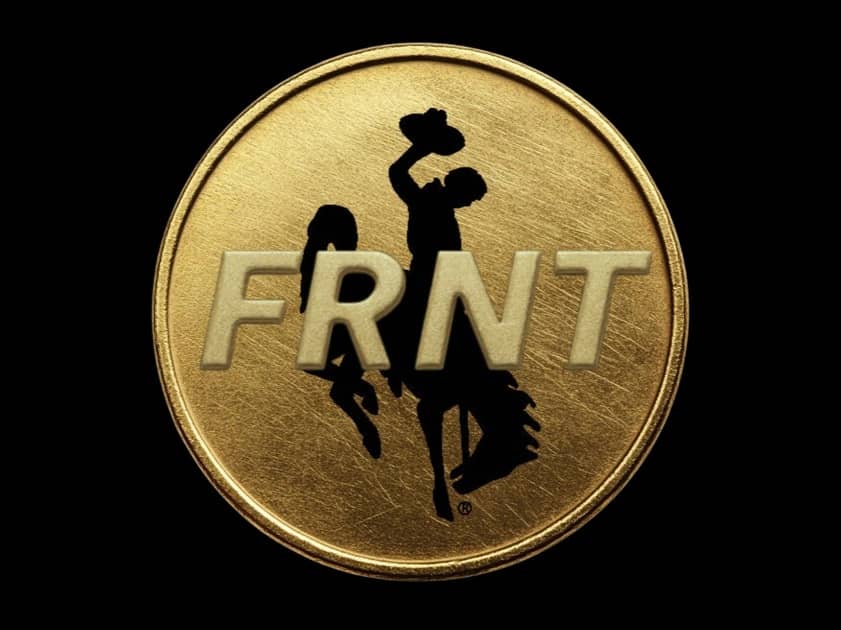订阅 wiki
Share wiki
Bookmark
Frontier Stable Token (FRNT)
Frontier Stable Token (FRNT)
Frontier Stable Token (FRNT) 是由美国怀俄明州发行的州级稳定币。它是一种完全由美元抵押的数字代币,并由短期美国国债和现金储备支持。[1] [2]
概述
FRNT,即 Frontier Stable Token,是由怀俄明州稳定代币委员会创建并于 2025 年 8 月 19 日正式推出的州级稳定币。它是美国州政府发行的首个稳定币,标志着怀俄明州在政府支持的数字资产领域中率先行动。FRNT 旨在通过由美元和短期美国国债组成的储备金,与美元保持 1:1 的挂钩,并且法律规定额外 2% 的超额抵押,以提供额外的稳定性。Franklin Advisers 管理储备金,The Network Firm 提供审计和每月证明,LayerZero 促进其跨链部署。在发布时,FRNT 可在多个区块链上使用,包括 Arbitrum、Avalanche、Base、Ethereum、Optimism、Polygon 和 Solana,Kraken 被列为首批通过其怀俄明州许可的附属公司 Kraken Financial 支持它的交易所之一。
该代币的推出正值一个价值 2850 亿美元的稳定币市场,该市场由 Tether 和 Circle 等私人发行人主导;然而,其结构将其区分为一项公共部门倡议,免受通常适用于私营公司的某些联邦监管。发布公告是在怀俄明州区块链研讨会上发布的,该研讨会由 Kraken 和 SALT 共同主办,突显了该州自 2016 年以来为 区块链 采用创造有利法律环境的更广泛努力,包括超过 45 项与 加密货币 相关的立法。虽然 FRNT 被定位为私人发行的稳定币的安全且受监管的替代品,但 FRNT 的推出最初受到限制,因为公众购买需要额外的监管批准。[1] [3] [4]
历史
Frontier Stable Token 的开发是怀俄明州长期以来为数字资产行业创造有利监管环境的直接结果。自 2016 年以来,该州颁布了超过 45 项与区块链技术和加密货币相关的立法,从而确立了其作为美国数字创新领先司法管辖区的地位。这项立法基础为怀俄明州稳定代币委员会的成立铺平了道路,该委员会是负责监督 FRNT 发行和管理的政府机构。[1]
怀俄明州州长 Mark Gordon 也是该委员会的主席,他强调了该州积极主动的做法:
“多年来,怀俄明州一直是区块链、加密货币和数字资产监管领域的领先州,自 2016 年以来通过了 45 多项立法。Frontier Stable Token 的主网启动将为我们的公民和企业提供一种现代、高效且安全的数字时代交易方式。”
在以 FRNT 名义正式发布之前,该项目曾被称为其他名称,包括 Wyoming Stable Token (WYST) 和 Wyoming Electronic Stable Token (WEST)。[1] [2]
技术
Frontier Stable Token 被构建为多链资产,以最大限度地提高 去中心化金融 中的可访问性和集成度。在发布时,它已部署在 Ethereum、Solana、Arbitrum、Avalanche、Polygon、Optimism 和 Base 上,使其可在主要和新兴的 区块链 生态系统中使用。它的互操作性由 LayerZero 提供支持,LayerZero 是一种旨在连接独立区块链并实现资产在其间无缝移动的协议。这种设计可防止 FRNT 局限于单个网络,并使其可用于各种应用程序、交易所和平台,从而反映了怀俄明州将其确立为广泛使用的数字货币而不是特定于链的稳定币的意图。[1]
代币经济学
Frontier Stable Token (FRNT) 围绕保守的储备模型构建,以维持稳定性和可靠性,每个代币以 1:1 的比例与美元挂钩。其储备金包括美元和短期美国国债,选择这些资产是因为它们的流动性和低风险。怀俄明州法律要求委员会维持至少 102% 流通供应量的储备金,从而创建一个超额抵押缓冲,以保障赎回。所有储备资产都保存在法律上独立的信托中,从而确保对代币持有人的保护。与算法稳定币不同,FRNT 依靠完全支持和经过审计的资产来维持其挂钩。[1] [2]
采用
FRNT 定位用于公共和私营部门,并通过 Visa 进行主要集成,从而可以在其网络上的任何商家进行支付。它还与 Apple Pay、Google Pay 和实体卡兼容,从而扩大了其在数字和传统支付系统中的覆盖范围。怀俄明州稳定代币委员会强调了潜在的政府应用,包括供应商付款、退税和社会福利,这些都可以通过链上交付。这些用例被认为是提高州级金融流程效率和透明度的方法。
公众对 FRNT 的访问计划为逐步推出。Kraken 是一家位于怀俄明州的交易所,将成为第一个提供该代币的平台,首先从 Solana 上发行。更广泛的可用性将取决于监管许可和委员会未来的公告。[1] [2]
合作伙伴
发现错误了吗?
